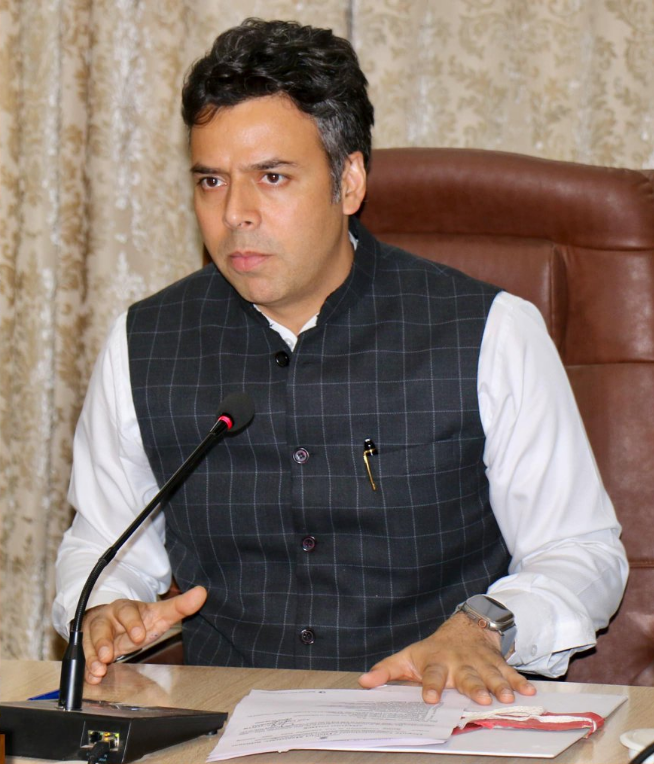Srinagar, April 19, 2025: Dr. Bilal Mohi-Ud-Din Bhat, Deputy Commissioner of Srinagar, led a comprehensive review meeting on April 17, 2025, at the DC Office to finalise arrangements for the Shri Amarnath Ji Yatra 2025. Scheduled from July 3 to August 9, 2025, the 38-day pilgrimage to the sacred Amarnath Cave is expected to attract around six lakh devotees, and Dr. Bhat issued directives to ensure its smooth and peaceful execution, emphasising enhanced facilities and robust coordination.
The meeting, attended by senior officials from the civil administration and police, focused on upgrading infrastructure to support the massive influx of pilgrims. Dr. Bhat instructed officers to bolster amenities at critical transit hubs like the Panthachowk Yatra Transit Camp and Nowgam Railway Station, prioritising the installation of sufficient mobile toilets, bathing units, and urinals. To address potential disruptions from rainfall, a common issue in Srinagar, he ordered proactive measures to prevent water logging at these sites.
A key directive was the establishment of an Emergency Operation Centre to streamline inter-departmental collaboration, ensuring rapid response to any challenges during the yatra. Dr. Bhat also emphasized clear signage at Panthachowk, detailing nearby facilities and emergency contact numbers to assist pilgrims. “Our goal is to provide a seamless and safe experience for every yatri, reflecting Kashmir’s hospitality,” Dr. Bhat stated during the meeting.
The Shri Amarnath Ji Shrine Board has reported strong early interest, with J&K Bank registering 4,200 pilgrims on April 14, 2025, the first day of the registration drive. Pilgrims, aged 13–70, must submit a Compulsory Health Certificate and obtain RFID cards for safety and tracking along the 48-km Pahalgam or 14-km Baltal routes. The SASB, under Lieutenant Governor Manoj Sinha, has enhanced facilities, including expanded Yatri Niwas at Panthachowk and improved e-KYC systems, building on 2024’s record 5.12 lakh pilgrims.
The yatra is a vital economic driver, generating seasonal employment for thousands of locals, from pony operators to vendors, while highlighting Kashmir’s pluralistic culture. Local communities, irrespective of faith, play a crucial role in supporting pilgrims, a tradition rooted in stories like that of Buta Malik, the Muslim shepherd who rediscovered the cave. Cultural events and handicraft stalls at base camps further showcase the Valley’s syncretic heritage.
Dr. Bhat’s meticulous planning reflects Srinagar’s commitment to elevating the yatra’s experience, ensuring it remains a beacon of faith and unity. As preparations intensify, the administration is poised to welcome devotees with improved logistics and warm hospitality, reinforcing Jammu and Kashmir’s role as a spiritual and economic hub.




